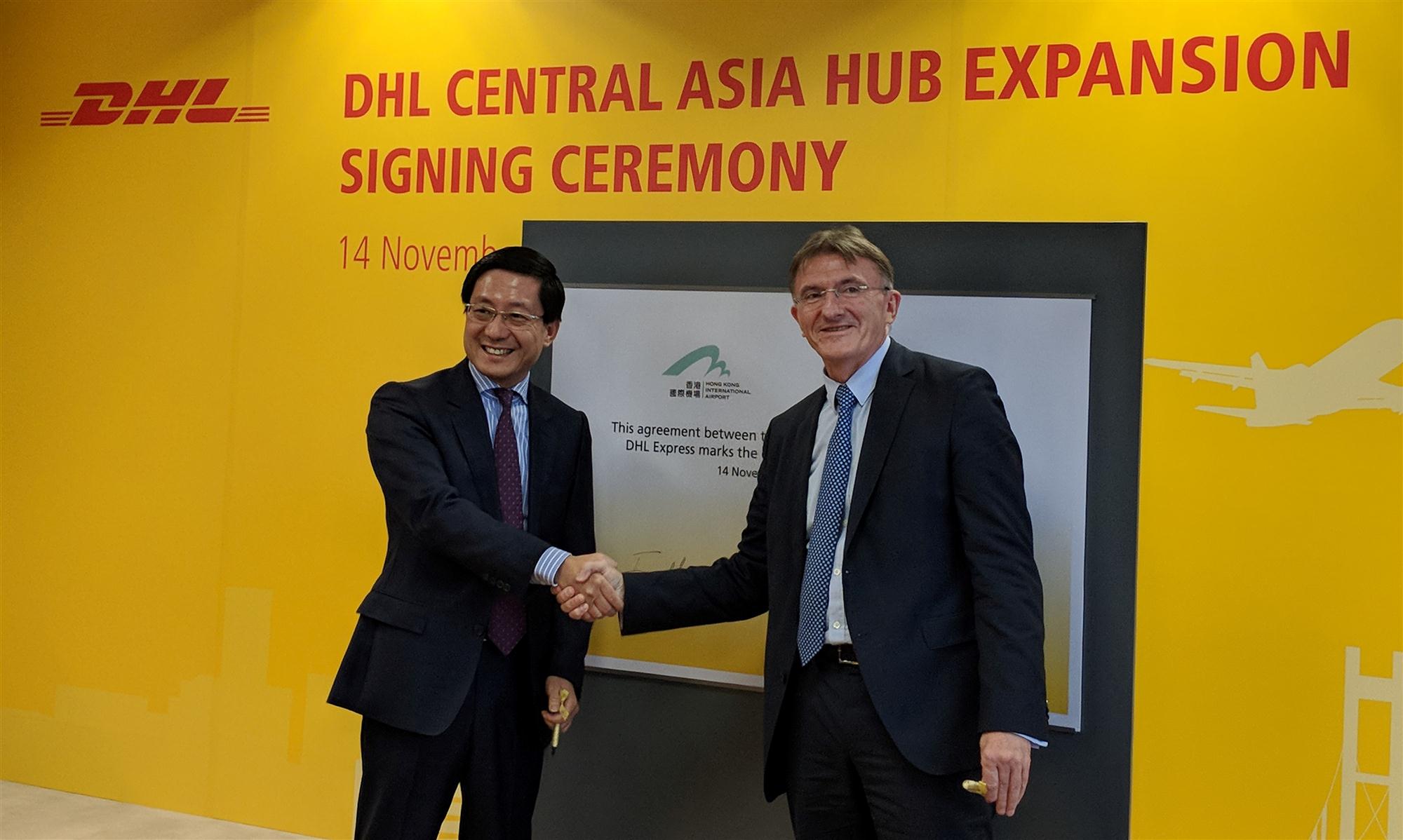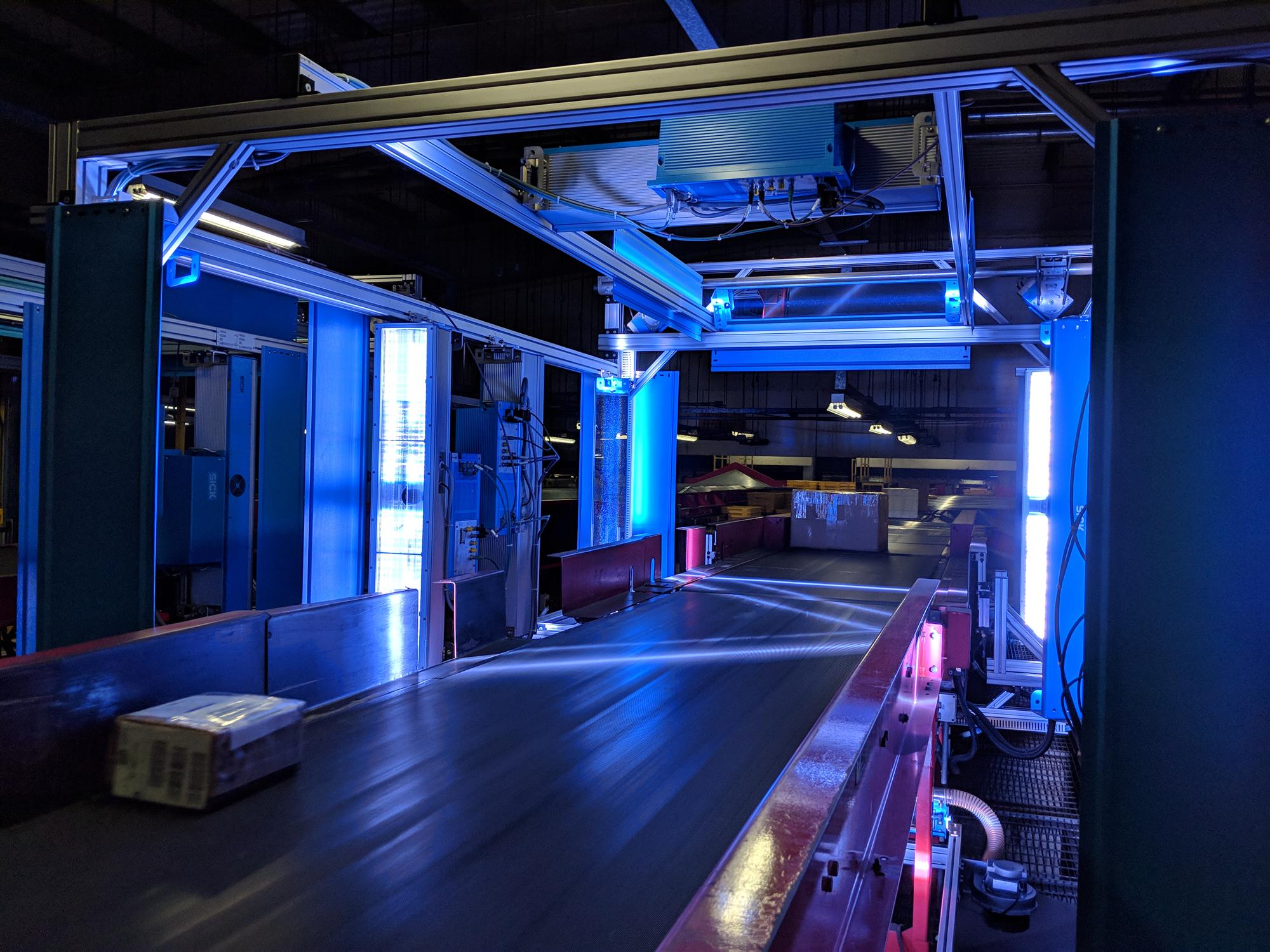DHL Express is to expand its Central Asia Hub at Hong Kong International Airport in a €335 million (US$3.97 million) investment which will take the facility’s throughput to over 1 million tonnes per year.
According to Tony Khan, general manager of the Central Asia Hub at DHL Aviation Hong Kong, the new expansion will feature a second building which is adjacent and connected to the existing facility via a bridge, with shipments travelling on the top level and people on the bottom.
“All the automation and equipment will be there to maximize our throughput of this facility,” said Khan.

Once the expansion is completed, DHL’s warehouse space will increase by 8,000 square metres to 47,000 square metres and the facility will be able to handle a total of 1.06 million tonnes every year. During peak times, it will be capable of processing 125,000 shipments every hour, thanks to automated sorting systems for parcels and documents, six-sided camera scanning and a fully automated X-ray inspection system. An in-house 24-hour customs facility also means that 97% of shipments are cleared on arrival.
According to Ken Allen, CEO of DHL Express, the strategic location of the hub will not only bolster the company’s operational capacity in Hong Kong, but also facilitate rapidly growing e-commerce demands both internationally and within the Asia-Pacific region.
“The growth rates that we’ve seen around the world, but especially out of Asia, have just been phenomenal for the last few years,” Allen said. “I think we’re on the cusp here of a second wave of global expansion. It’s now possible due to broadband and mobile technology for every single person in the world to be connected. That’s going to drive a boom in commerce because it’s now going to be, for the first time in history, decided by the consumer. If you go to a brick-and-mortar shop, there’s a limited amount of things you can buy. With today’s technology, we can actually buy anything from anywhere around the world.”
Construction of the new facility is targeted to begin towards the end of 2018 or the beginning of 2019, with completion and launch of operations expected in the first quarter of 2022, to coincide with the launch of Hong Kong International Airport’s three-runway system.
“We would like this place to open tomorrow morning if possible, but I know it’s going to be difficult,” said Allen. “We’re ready and we’ve got great relationships.”
DHL’s Central Asia Hub in Hong Kong connects to more than 70 DHL Express gateways in the region and is one of three global hubs, along with Leipzig and Cincinnati. Within the Asia-Pacific region, DHL also has hubs in Bangkok, Shanghai and Singapore.
According to Ken Lee, CEO of DHL Express Asia Pacific, the expanded facility will help DHL capitalize on the growth in intra-Asia trade, which currently accounts for more than 40% of the company’s revenue in Asia Pacific.
“Trade is growing rapidly in the region and customers are looking to reach global markets in greater volumes than ever before,” he said. “Shipping volumes at our Central Asia Hub have experienced double-digit growth continuously over the past 10 years.”

Going forward, Lee said that the overall trade outlook for Asia Pacific is robust and sustainable, with the region continuing to be the world leader in growth in spite of some economic uncertainties in the short to medium term.
“Recent data point to a pickup in momentum,” he said. “The IMF expects the Asia-Pacific region’s GDP to grow something like 5.5% in 2018, and the Asia-Pacific region is expected to be the world’s largest cross-border e-commerce market by 2022, with China generating the lion’s share of the growth.”
Lee is convinced that Hong Kong will remain the preferred international gateway to Chinese consumers, given that it is China’s second-largest trading partner behind the US. On a related note, he pointed out that Hong Kong’s merchandise exports are also accelerating, having grown 8.5% in the first three quarters of 2017 compared to the same period last year.
“Hong Kong still holds many natural advantages as a logistics hub,” he said. “The location is within four hours’ flight time to major cities in the Asia-Pacific and Pearl River Delta regions; its infrastructure is highly developed; the legal system is considered one of the most transparent in Asia, and its compliance processes are viewed as extremely business-friendly, so Hong Kong has not lost its relevance for international trade and we believe it will only continue to grow.”
Having completed the first round of expansion of the Central Asia Hub in 2008, DHL will continue to constantly invest in it to improve its capability and operational efficiency.
“As we do so, our customers can expect faster, more reliable and more versatile shipping than ever before,” Lee said. “We’re confident that the Central Asia Hub will further strengthen DHL’s network capabilities in Hong Kong and the region, and I look forward to what it will deliver to DHL and especially our customers.”
Allen said that he sees no reason why global trade should not just continue but accelerate, so he doesn’t waste time worrying about issues such as politics and protectionism.
“I worry about what our customers want,” he said. “We’ve found that if you look after the customer, then you can have a great business and you’re going to be very successful.”
By Jeffrey Lee
Asia Cargo News | Hong Kong